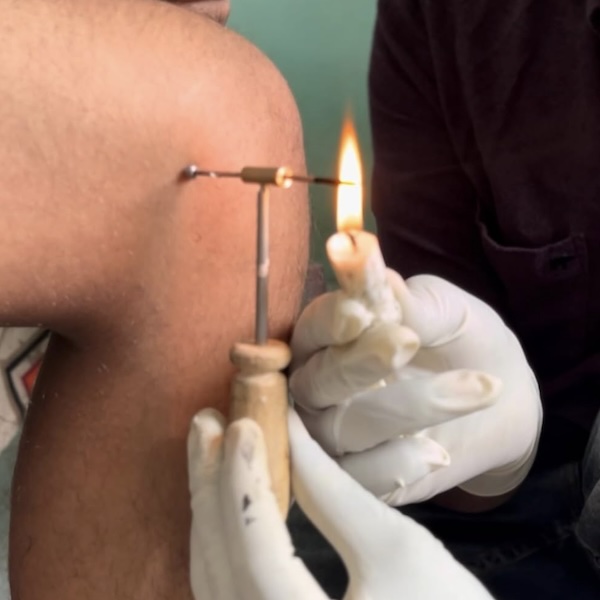
Agnikarma – Ancient Healing for Modern Pain
Agnikarma, an ancient Ayurvedic treatment, offers a powerful and effective solution for chronic pain and musculoskeletal disorders. By using therapeutic heat application, Agnikarma helps to relieve pain, improve mobility and restore balance in the affected area—without the need for medication or invasive surgery.
Unlike conventional heat therapy, Agnikarma penetrates deeper layers of tissue, targeting the root cause of pain and inflammation at the doshic level (Vata, Pitta and Kapha imbalance).
Conditions treated with Agnikarma therapy
Agnikarma is highly effective in managing a wide range of orthopaedic, neurological and soft tissue disorders, including:
- Osteoarthritis (Knee, Hip, Spine)
- Cervical and Lumbar Spondylosis
- Sciatica / Gridhrasi
- Frozen Shoulder / Avabahuka
- Tennis Elbow / Elbow Tendinitis
- Heel Pain / Plantar Fasciitis
- Joint stiffness & muscle spasms
- Sports injuries & soft tissue strain
- Chronic neck and back pain
Benefits of Agnikarma treatment
- Fast Pain Relief – Many patients report immediate to early relief after just one session.
- Non-surgical & Drug-Free – No medication, no surgery and zero systemic side effects.
- Precise & Targeted – Focused on the affected area for maximum therapeutic impact.
- Promotes Natural Healing – Stimulates local circulation, tissue repair and dosha balance.
- Safe & Effective – Backed by centuries of Ayurvedic wisdom and growing clinical evidence.
The Agnikarma procedure –
- Diagnosis & Assessment -The Ayurvedic practitioner evaluates your symptoms, doshic imbalance and clinical history.
- Preparation - The target area is cleaned, marked, and prepped. Pain-relieving herbal oils may be applied.
- Heat Application - Using a heated Panchadhatu Shalaka or modern probe, the practitioner applies thermal energy to the skin in a controlled pattern (bindu, vilekha or vardhamana).
- Post-Procedure Care - Cooling herbs, soothing oils or medicated dressings are used to calm the area and promote healing.
- Follow-Up - Multiple sessions may be recommended depending on the condition.
The entire process is quick (15–30 minutes) and generally does not require anesthesia.